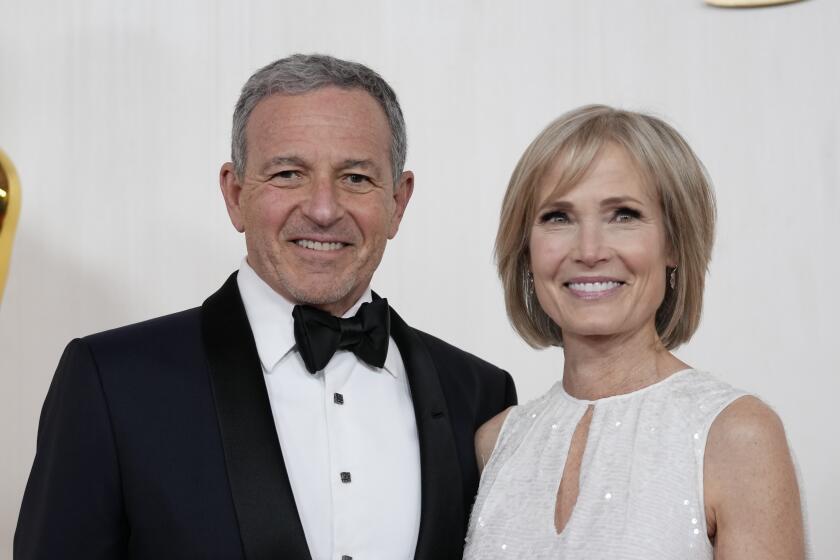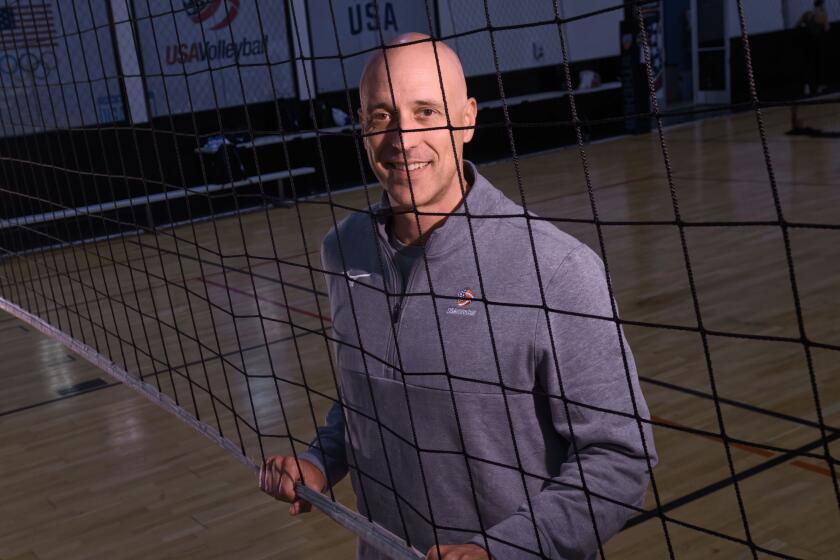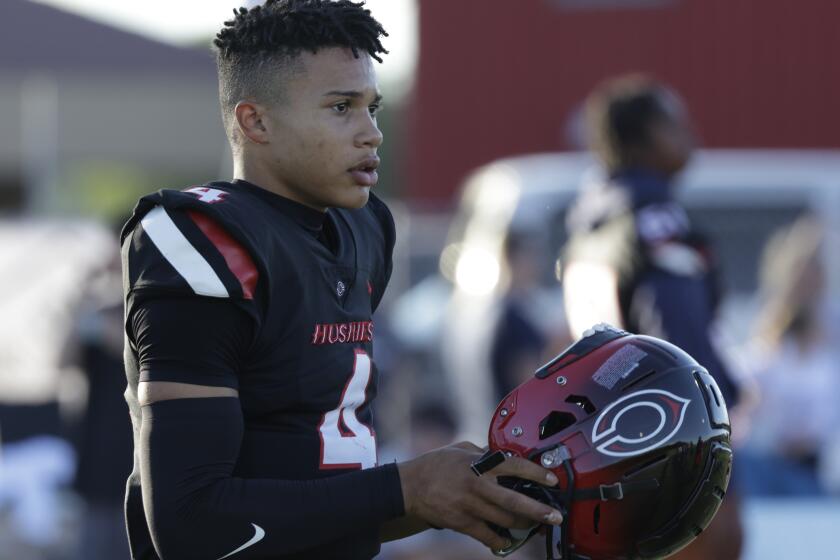Soccer! Gap between rich clubs and poor ones has never been wider in Europe

Hello and welcome to another edition of the L.A. Times soccer newsletter. I’m Kevin Baxter, the Times’ soccer writer, and we start today in Europe, where the gap between the rich clubs and the poor ones has never been wider.
The defending champion in three of the continent’s top five leagues — Bayern Munich, Paris St.-Germain and Juventus — are the among richest clubs in their countries, according to the accountancy firm Deloitte, which annually ranks the world’s top teams by soccer revenues.
In all three cases, no other club is close.
And Barcelona, the reigning champion in Spain, is the second-richest club in the world, behind only league rival Real Madrid.
But in recent years some little guys have proved you can still beat the big clubs even if you can’t outspend them.
In 2016, for example, lowly Leicester City, just two seasons removed from the second-tier Championship, won the EPL title despite having a $100-million payroll that ranked 17th in the league.
Chelsea and Manchester United each spent nearly 4½ times as much on players that season.
However, the real master at doing more with less may be Spanish club Sevilla, winner of three of the last six Europa League titles. Twenty years ago the club was so deep in debt it nearly sold its stadium to pay its bills.
“We didn’t even have the money to buy footballs,” said team president Jose Castro.
So the team found other ways to compete. Because it’s cheaper to make a player than it is to buy one, Sevilla built a stellar academy, one that sent stars such as Sergio Ramos and Jesus Navas to the first team, then on to wealthy teams for exorbitant transfer fees.
“All these players have made us a better side. And then gone on to help the club’s finances when they were sold,” Castro said. “We were the first to understand that, as unpopular as it may be, selling a star player could mean taking a step backward and then three steps forward as long as we knew how to invest the money.”
That’s where Ramón Rodríguez Verdejo — better known as Monchi — comes in. A former goalkeeper who spent his entire career with Sevilla, Monchi, now the club’s sporting director, is the Billy Beane of international soccer.
He has built a deep scouting and player-development system that has beaten the bushes to find, then produce, young players. But it’s also helped him find value in players others have overlooked, allowing him to buy low and sell high, running players through his first team as if they were on a conveyor belt.
And like Beane, executive vice president of baseball’s Oakland Athletics, he’s managed to win while doing that.
“Being different from the rest will always be the plan,” Monchi said. “On the sporting side, we are betting on innovation and development, creating a specific department for this. We are using tools and cutting-edge ideas to look at data.
“Everyone has the data. We are now looking to lighten this process. This is the key. We are trying to cover as much as possible and do it in the quickest way too.
“Twenty thousand players play in professional leagues every weekend. We are trying to create tools to take from those the evidence and data as quickly as possible.”
Between 2005 and 2016, that strategy won Sevilla six Europa League titles and three domestic cups. Then Monchi left for Roma and the team won nothing.
He returned in March, made 38 moves in the summer transfer market and now Sevilla is third in La Liga — a point behind deep-pocketed Barcelona and Real Madrid — and unbeaten five games into the current Europa League tournament.
“This is how we have done it,” Monchi said. “By returning to being different and setting a trend.”
When Monchi started sending scouts to U-20 games, he says few teams followed. Now those tournaments draw hundreds of club representatives, he said. And while he didn’t invent the idea of developing talent with an eye toward selling it, Monchi has probably played the transfer market better than any other executive in European soccer.
And while that hasn’t changed the names at the top of the league table in Spain, it may be making those top clubs a little uncomfortable.
“We know in advance that the top two spots are for [Real] Madrid and Barcelona. And the third is for Atletico [Madrid] because these teams have a much bigger budget,” he said. “Being close to these teams or even knocking one of them out of third place would be a noteworthy achievement.
“I believe we are close to this level. Our objective to be amongst the best teams in Europe.”
We didn’t start the fire
Zlatan Ibrahimovic took to social media last week to share a photo of a green Hammarby jersey with his name on the back, immediately fueling speculation that the former Galaxy striker had signed with the Swedish club.
Turned out he was just announcing he had become a part-owner of the club. But given what happened next, he may wish he had kept that a secret.
Ibrahimovic began his pro career in his hometown with rival club Malmo, which just last month erected a statue of him in front of its stadium. So when news spread that Ibrahimovic now owned part of another club, Malmo’s supporter group Ultras poured lighter fluid on the statue and used flares to set it ablaze. Another group of fans went to the house Ibrahimovic keeps in Malmo and wrote “Judas “ on the door.
Ibrahimovic became a part owner of Hammarby, a Stockholm-based club, by assuming a 23.5% share that was previously held by AEG, the Galaxy’s parent company. The transfer in ownership was part of an agreement Ibrahimovic had with the Galaxy when he signed with the MLS club, similar to the deal David Beckham had in 2007. Beckham’s deal included a $25-million option to buy an MLS club, an option he exercised with Inter Miami, which enters the league next season.
“Everyone is extremely critical,” Kaveh Hosseinpour, vice chairman of the Ultras, told Swedish journalists. “Some are disappointed, some are angry and some think it is idiotic.
“He has probably lost his grip on what he means to Malmo. He misunderstands his position a little when he says that Malmo will be happy for his sake. There is no one in Malmo who runs around in an L.A. Galaxy shirt and plays with Ibrahimovic on his back.”
Former Malmo player and coach Jens Fjellstrom said in a podcast that Ibrahimovic’s decision was “a declaration of war” and that Ibrahimovic should be considered a “rival” to the club.
Hosseinpour, meanwhile, has called for the statue to be removed and reinstalled in Stockholm, closer to Ibrahimovic’s new team.
Border crossing
Last month’s announcement that Mexico’s Liga MX would take part in the 2020 MLS all-star game is just the latest in a growing list of collaborations between the two leagues that are already benefiting both. But Landon Donovan, who played on both sides of the border, said the biggest impact has yet to be felt.
Last season there were six Mexicans in MLS, with four of them — LAFC’s Carlos Vela and Pablo Sisniega and the Galaxy’s Jonathan dos Santos and Uriel Antuna — playing in Southern California. And Donovan, who came out of retirement to spend part of a year playing in the Liga MX with Leon, says he expects that number to increase markedly as the leagues come closer together.
“To a player, every one of them came up to me at some point in four months and said, ‘Can you get me to MLS? I want to play in MLS,’ ” Donovan said of his Mexican league teammates. “In the past the gap in wages was so big that it just made too much sense to play in Mexico. Now it’s very small or it’s negligible. And so now they want to come play here.”
Days after Donovan made those comments Chivas de Guadalajara striker Alan Pulido indicated he was about to do just that.
“Most likely I’ll go to MLS. There are some important teams there that are interested in me,” Pulido said.
Juan Jose Macias, 20, one of Liga MX’s most dangerous strikers in 2019, is reportedly considering a move north as well.
“It’s great for their family. It’s a great opportunity from a lifestyle perspective. They can make great money,” Donovan said. “They can be stars in these but also have relative anonymity. It’s a dream for them in a lot of cases to come play in America.”
Counting the House
Five of the 10 largest crowds for a women’s soccer match in 2019 featured the U.S. national team.
1. England vs. Germany (friendly in London), 77,768
2. Atletico Madrid vs. Barcelona (Spain, Liga Femenina), 60,739
3. U.S. vs. Netherlands (Women’s World Cup final in Lyon), 57,900
4. U.S. vs. England (Women’s World Cup semifinal in Lyon), 53,512
5. U.S. vs. Portugal (friendly in Philadelphia), 49,504
6. Netherlands vs. Sweden (Women’s World Cup semifinal in Lyon), 48,452
7. Athletic Bilbao vs. Atletico Madrid (Spain, Copa de la Reina), 48,121
8. U.S. vs. France (Women’s World Cup quarterfinal in Paris), 45,595
9. U.S. vs. Chile (Women’s World Cup group stage in Paris), 45,594
10.France vs. South Korea (Women’s World Cup group stage in Paris), 45,261
(Source: Soccer America)
Geography lesson
With expansion teams in Nashville and Miami entering Major League Soccer next season, MLS had to add one team to each of its two conferences. Miami was the natural addition for the 13-team Eastern Conference, leaving Nashville, which is east of the Mississippi River — and east of Chicago — in the Western Conference.
But that’s not the biggest issue with the latest round of expansion. With 26 teams and a 34-game schedule, MLS teams, for the first time, will not play all of their league rivals in 2020.
Each team will play 24 games in conference, meeting the other 12 clubs home and away. But because the league will stick with a 34-game schedule, that leaves room for just 10 games against clubs from the other conference, leading to the most unbalanced schedule in the league’s 25-year history.
And that will make the competition for the Supporters’ Shield, which goes to the team with the league’s best regular-season record, controversial since teams won’t be playing equal schedules. For example LAFC and the Galaxy, which are both in the Western Conference, will play defending league champion Seattle twice while the New York Red Bulls may not play Seattle at all.
MLS could have avoided that by expanding its schedule to 37 games, allowing for all 26 teams to meet one another at least once. But that would have meant further crowding an already packed schedule.
The league will face more scheduling headaches in 2021 when Austin joins the league, then again in 2022 when St. Louis and Sacramento begin play.
The league hopes to announce the complete 2020 schedule by the end of the year. The season will kick off on Feb. 29, the earliest start in MLS history.
Quotebook
“I never stopped dreaming and enjoying football like when I was a child. I hope I have more years to enjoy, although I am aware of how old I am. Everything happens very quickly, and I know that the moment of retirement is approaching.”
Lionel Messi, 32, after winning a record sixth Ballon d’Or on Monday
Until next time
Stay tuned for future newsletters. Subscribe here, and I’ll come right to your inbox. Something else you’d like to see? Email me. Or follow me on Twitter: @kbaxter11.
More to Read
Go beyond the scoreboard
Get the latest on L.A.'s teams in the daily Sports Report newsletter.
You may occasionally receive promotional content from the Los Angeles Times.







